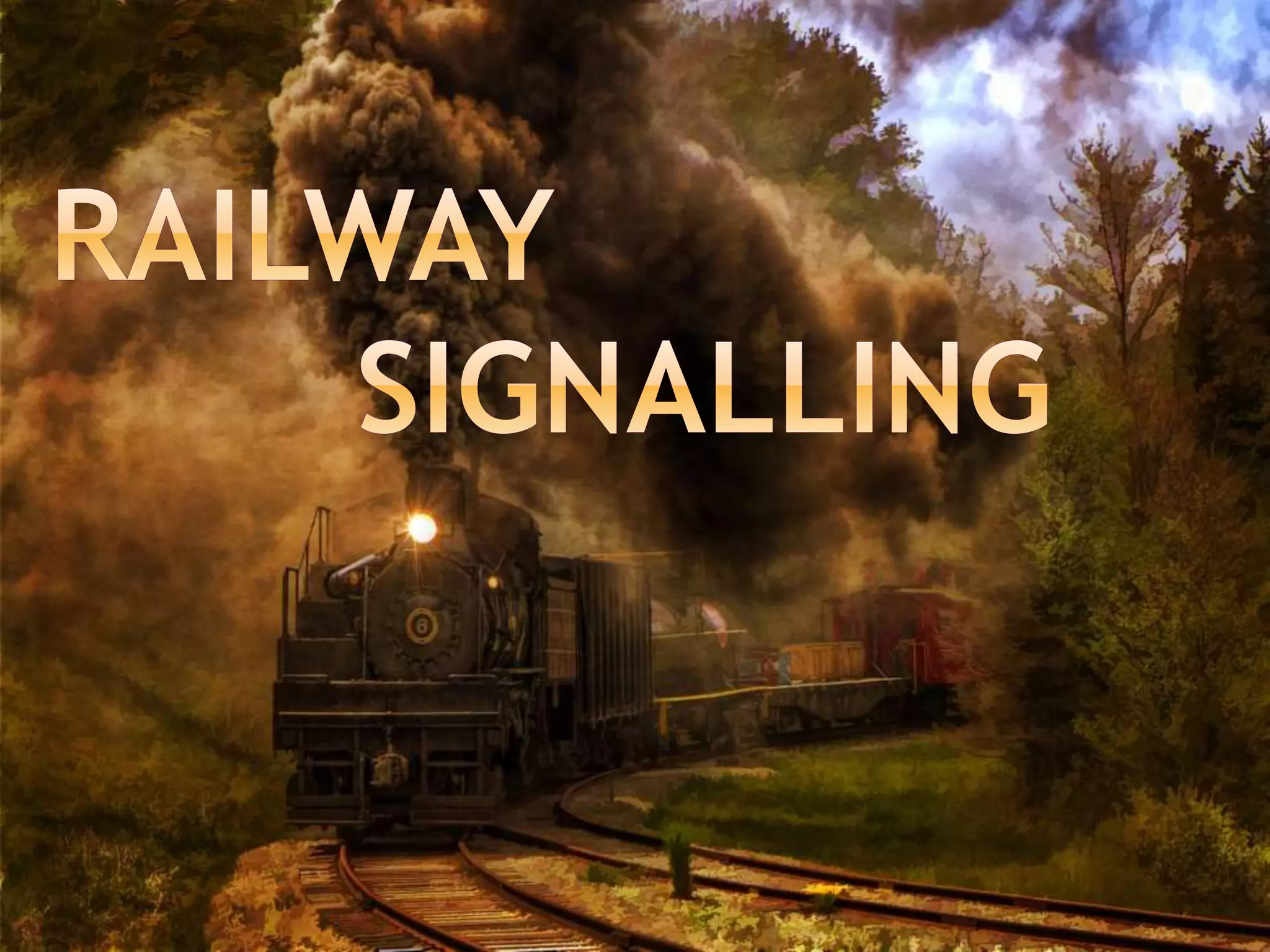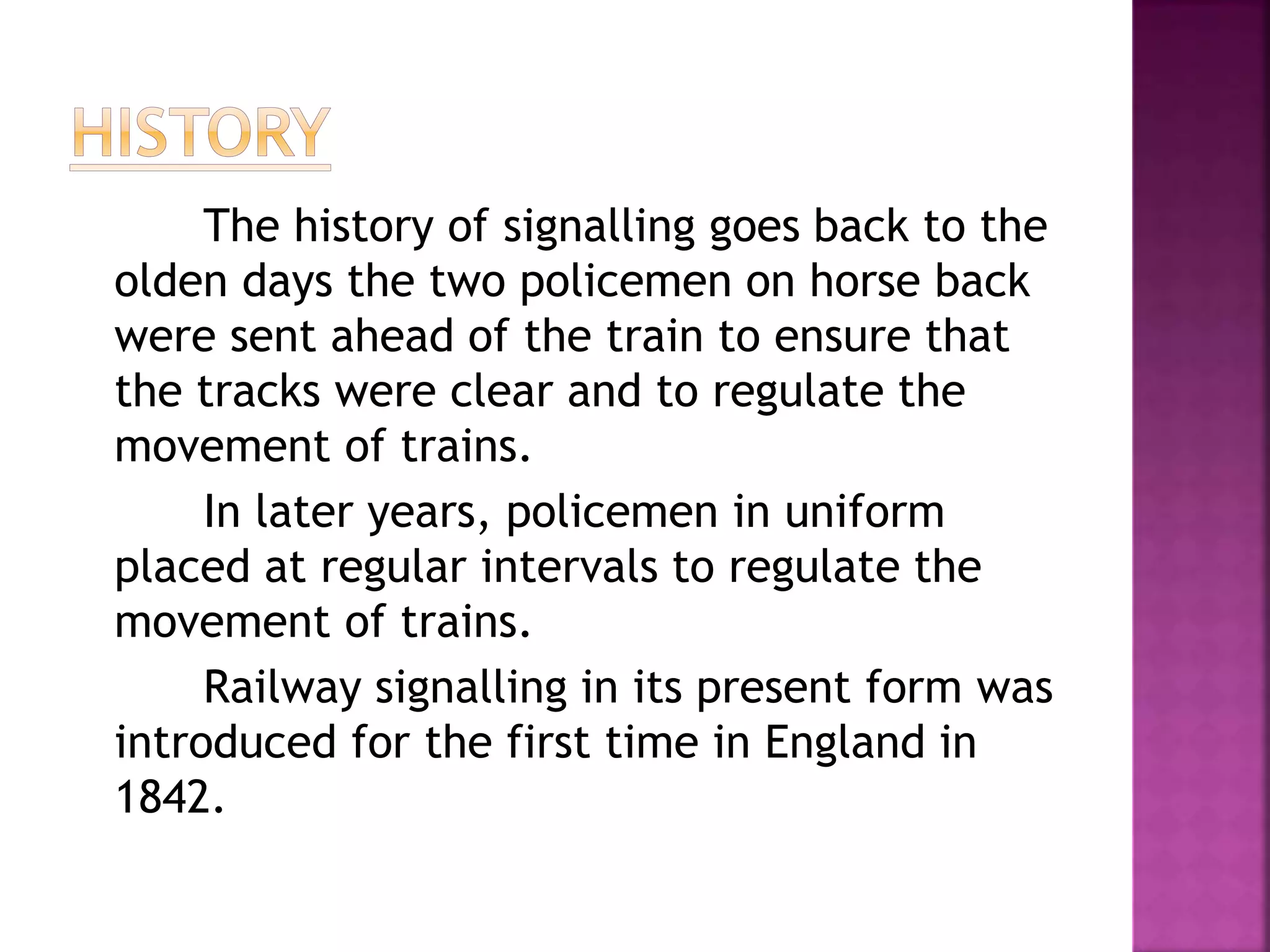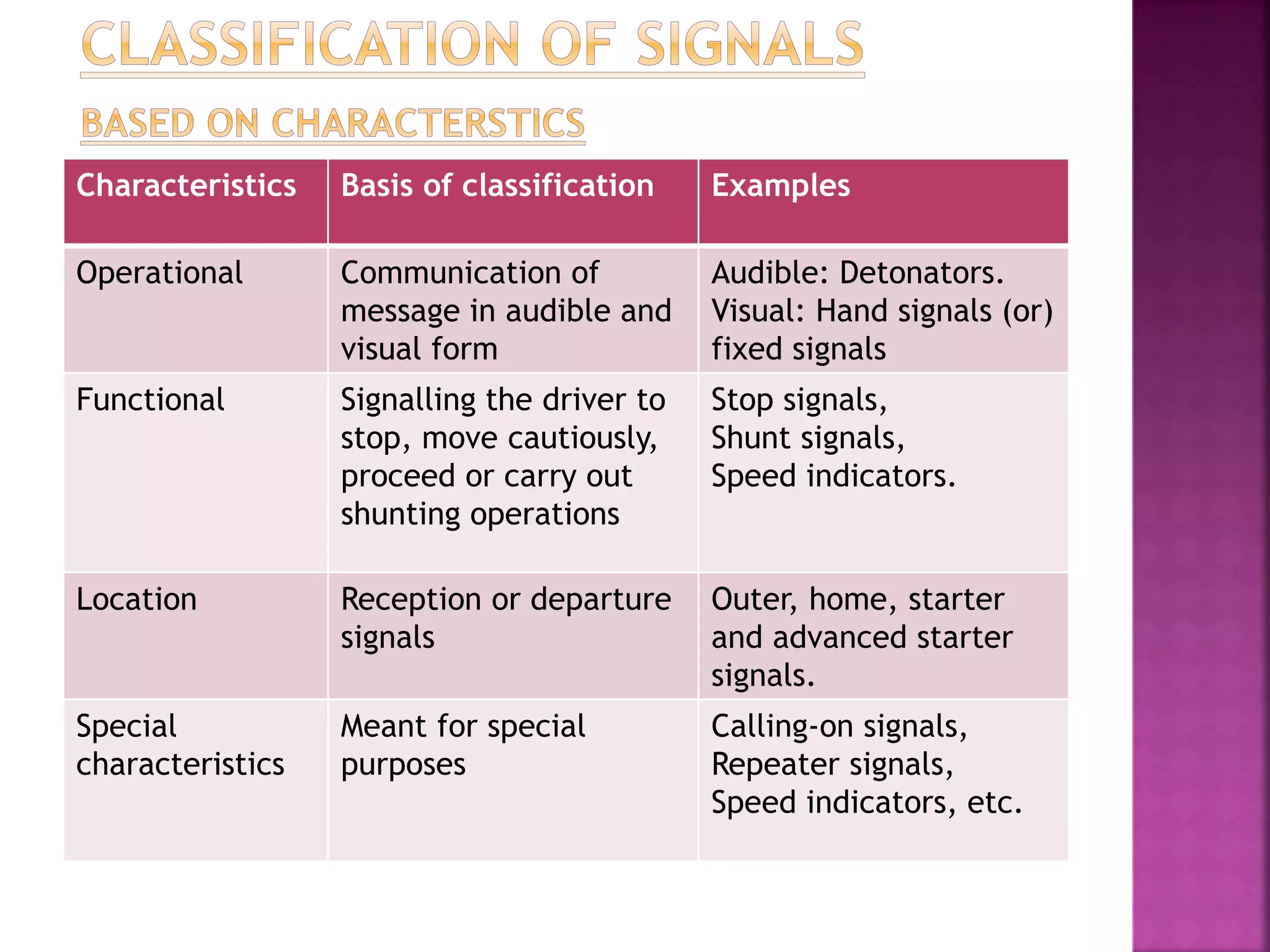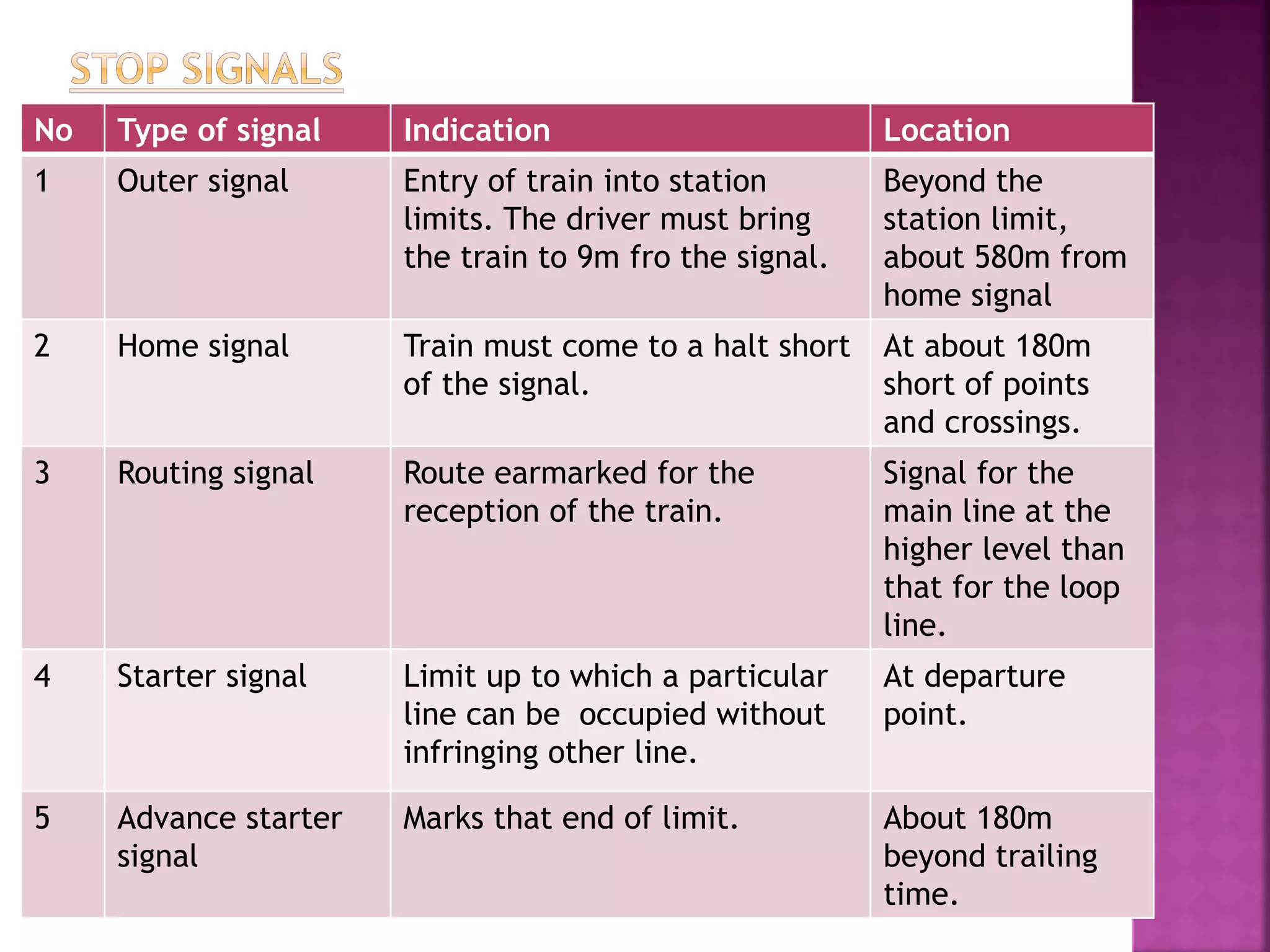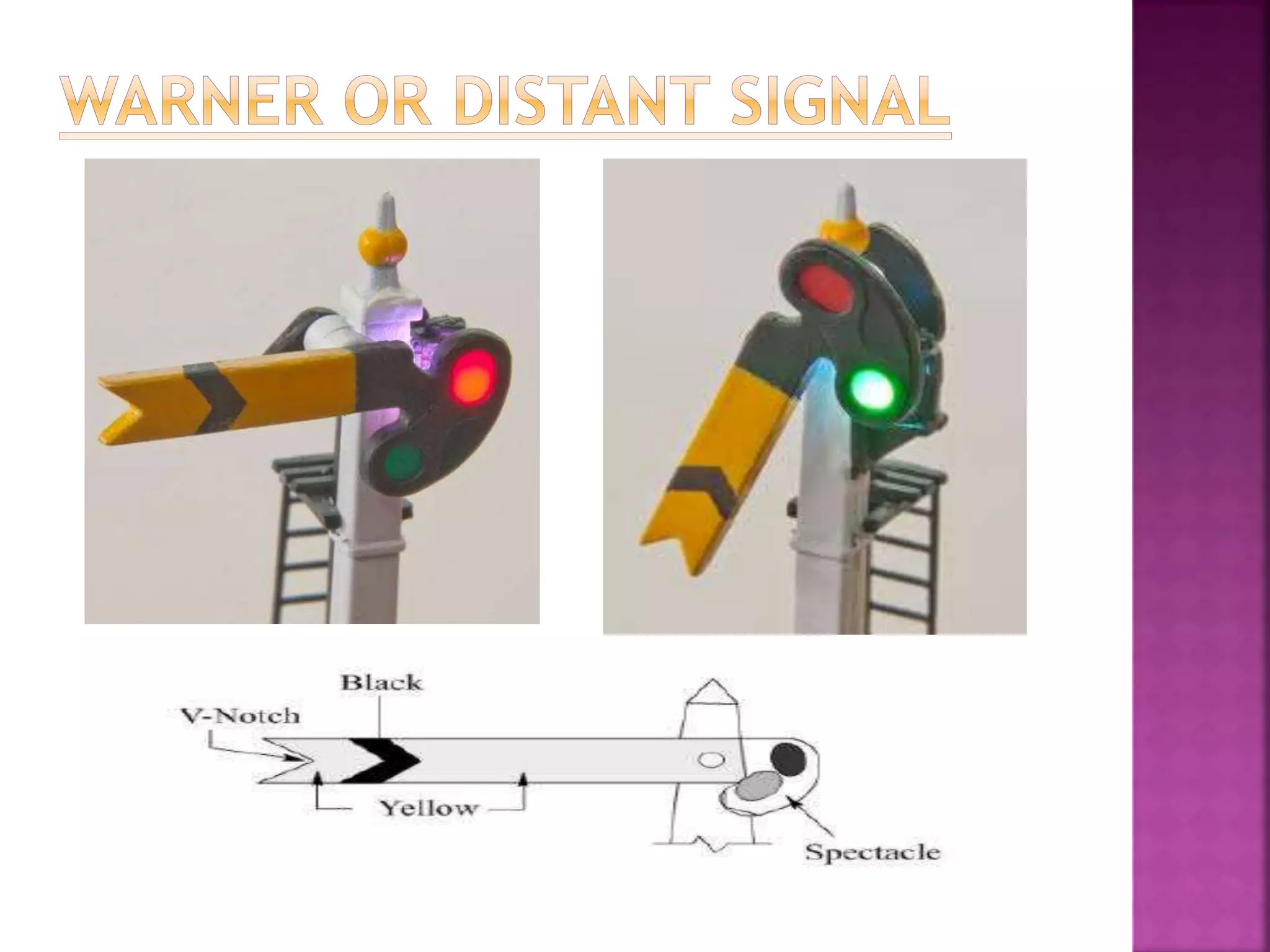The document discusses railway signalling systems. It describes how signals are used to safely regulate train movements and maximize track utilization. Early systems used policemen and hand signals, while modern signalling was introduced in England in 1842 using fixed semaphore signals and detonators. Signals communicate different instructions like stop, caution, or proceed using aspects like colored lights, positions of arms, or detonator explosions. The classification, types, and locations of various signals are also outlined.
